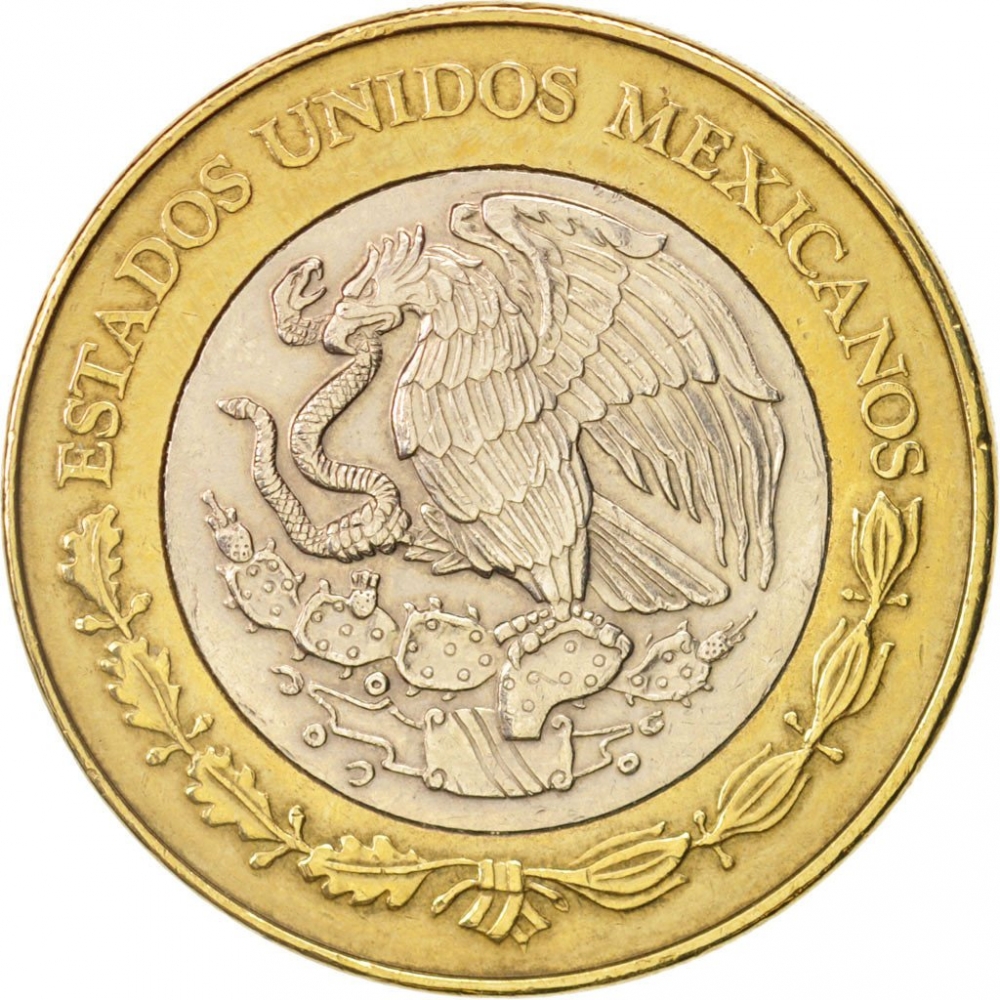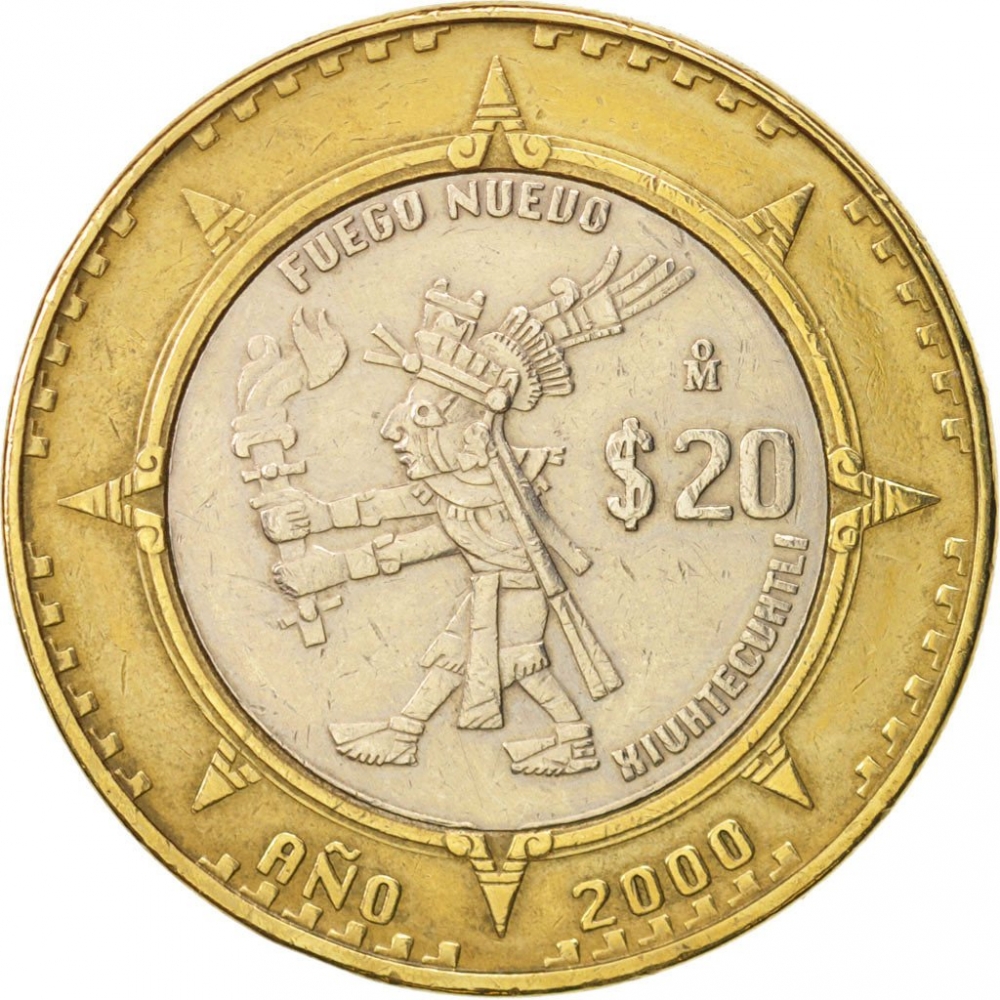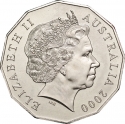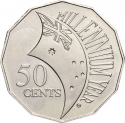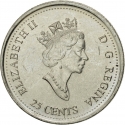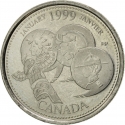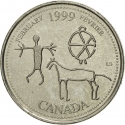You are about to finish your registration. Please check your mailbox (including spam folder). There should be a letter with a confirmation link. Check setting to make sure that your e-mail address is correct.
Send letter againDescription
In recognition of the new millennium the Mexico City Mint issued a special 2 year type coin for circulation. Design features included a modified reverse date of “AÑO 2000” or “AÑO 2001”.
Obverse

|
Depicts the seal of the United Mexican States. ESTADOS UNIDOS MEXICANOS |
|---|---|
Reverse

|
Xiuhtecuhtli performing the New Fire ceremony (Ceremonia del Fuego Nuevo) within an ornamental circle with denomination and legend inside and date below. FUEGO NUEVO |
| Edge |
20 Pesos
Third Millennium
Xiuhtecuhtli
Subscribe series
KM# 637 Schön# 237
Third Millennium
Xiuhtecuhtli
Characteristics
| Type | Commemorative Issue (Circulating) |
| Material | Bi-Metallic |
| Ring | Brass |
| Center | Cupronickel |
| Weight | 15.945 g |
| Diameter | 32 mm |
| Thickness | 2.1 mm |
| Shape |
|
| Alignment | Coin |
| Mint |
Mexican Mint (Mo)
|
